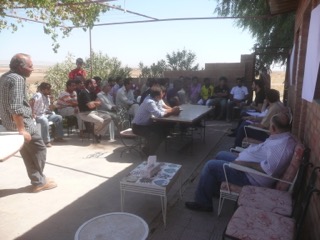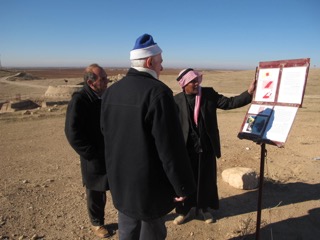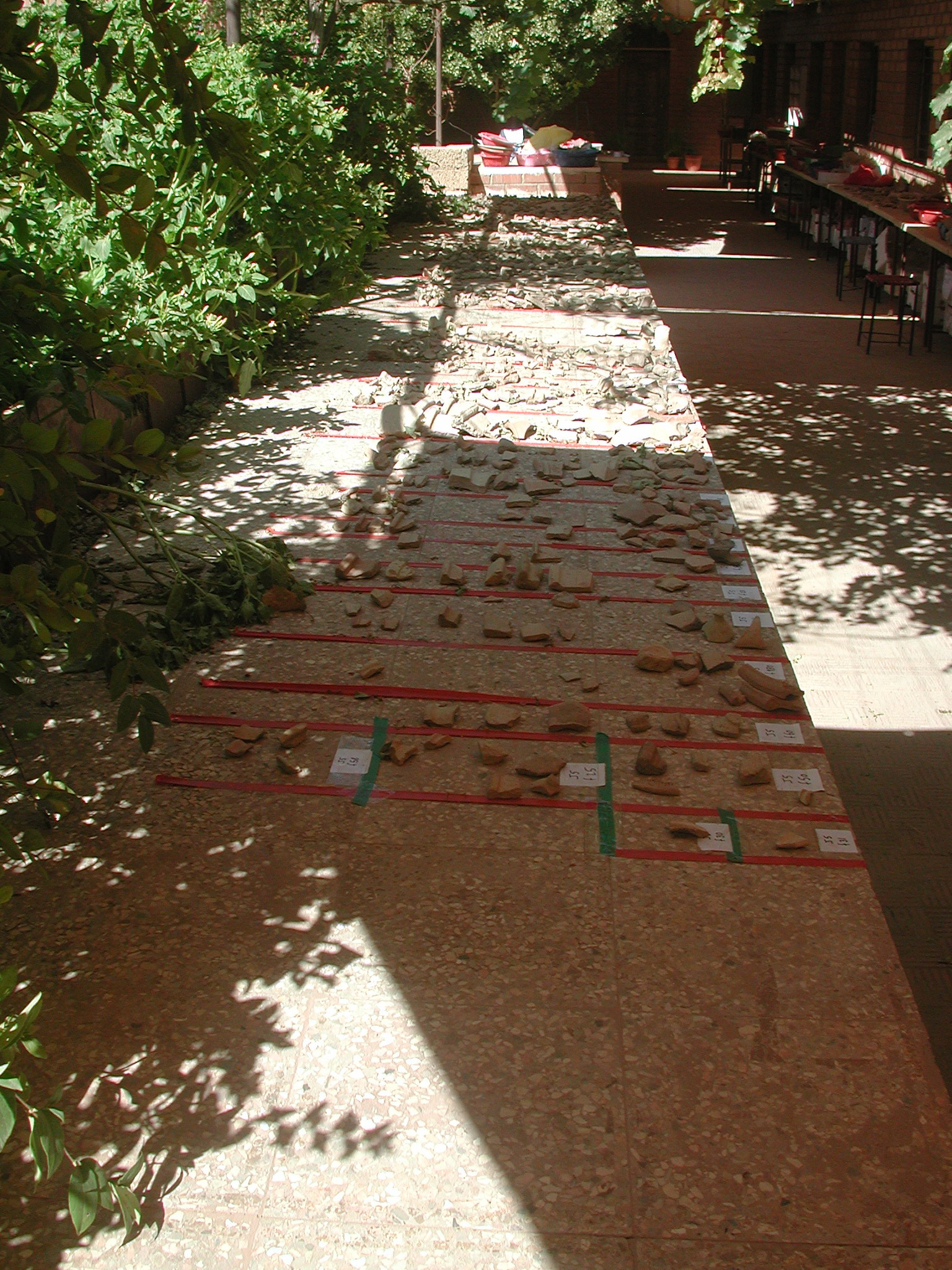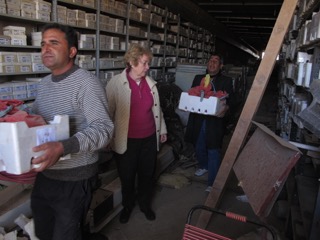Back to top: History of the Project 2: Work on the ceramic inventory during the war
Introduction
At the time of this writing the war in Syria tragically has been going on for seven years. We of course had no idea that this human and cultural disaster would continue for such a long period. When the war started we decided to go to the site and so in December of 2011 we went to Mozan to coordinate local activities for the period of the war.
We made sure that mechanisms that had been in place for many years for the conservation of the site and its extensive architectural remains would be continued. We made sure that the constructed visitor paths, stairways and constructed platforms for viewing larger areas of the site as well as the excavations would be carefully safeguarded and repaired when necessary. Additionally with the local experts we had trained over the years, we organized the preservation of the extensive signage system carrying explanations for visitors, about 100 “pages” displayed on various types of locally made large and small metal stands.
At the same time, we reviewed closely the storage system , in particular the large amount of ceramic material that had not been sent to the museum, and made plans for further analysis during our absence from the site. This was entrusted to my local assistant, Hammade Hamza, to whom I gave precise instructions on how to continue his work even during my absence. He has done an excellent job for these many years.

|

|
Back to top: History of the Project 2: Work on the ceramic inventory during the war
Analytical procedures during the excavations
In every excavation unit we had discovered approximately between 10,000 sherds (see for instance J3 with a total of 13,299 excavated sherds) to approximately 60,000 sherds (see A16 with a total of 59,834 excavated sherds). The sherd totals depended on the chronological period we were uncovering, the length of excavations in that area and type of stratigraphy we were encountering.
Our prioritieses were always to analyze first the best stratified contexts in every unit we were at that point excavating. This was accomplished for all units. To the extent space was available excavators were able to see the ceramics we had analyzed from their units.

|
After this first step, the second step was to complete the analysis of all other ceramics in the unit. Typically this happened during the study portion of that season or a later season. In this way we were able to analyze the entire excavated ceramic corpus for the units A9, A14, A15, A16, J1, J2, J3, J5 and OH2 totaling more than a half million sherds analyzed. But at the time of the beginning of the war there were a number of sherds to be analyzed in our storeroom.
Back to top: History of the Project 2: Work on the ceramic inventory during the war
Work on ceramics during the war
During our 2011 visit, I decided which of the stored sherds would have priority for the continuing analysis even during the period of the war. This was possible because part of our local analysis team that had been trained and had acquired much experience during the many years of the excavations still lived locally. We were fortunate that the main person in the local team, Hammade Hamza, lived in Mozan village and was willing to continue carrying out the analysis. My assistant Ibrahim Khellu was also able to assist in the logistics connected with the transport of the ceramics from the storeroom to the village since we were very fortunate that we were able to get permission to remove some of the sherds to Hammade’s house in the village. He had already the encoding forms and the various lists and catalogs needed to fill out these forms.

Fortunately, Hammade has in fact been able to work continuously on analyzing the ceramics during all the long years of war. His coded input sheets were transferred by another local person into Excel format and these files sent to us. Also if there were any interesting sherds, or the occasional seal impression fragment or part of a figurine Hamamde would ask another local assistant to photograph them and send them to us.
When he had completed the analysis of a group of sherds they were returned to the expedition storeroom. In consultation, we would then decide what group to analyze next and they would be taken to his house to work on there. In this period of the war he has analyzed over 60,000 sherds.
Back to top: History of the Project 2: Work on the ceramic inventory during the war